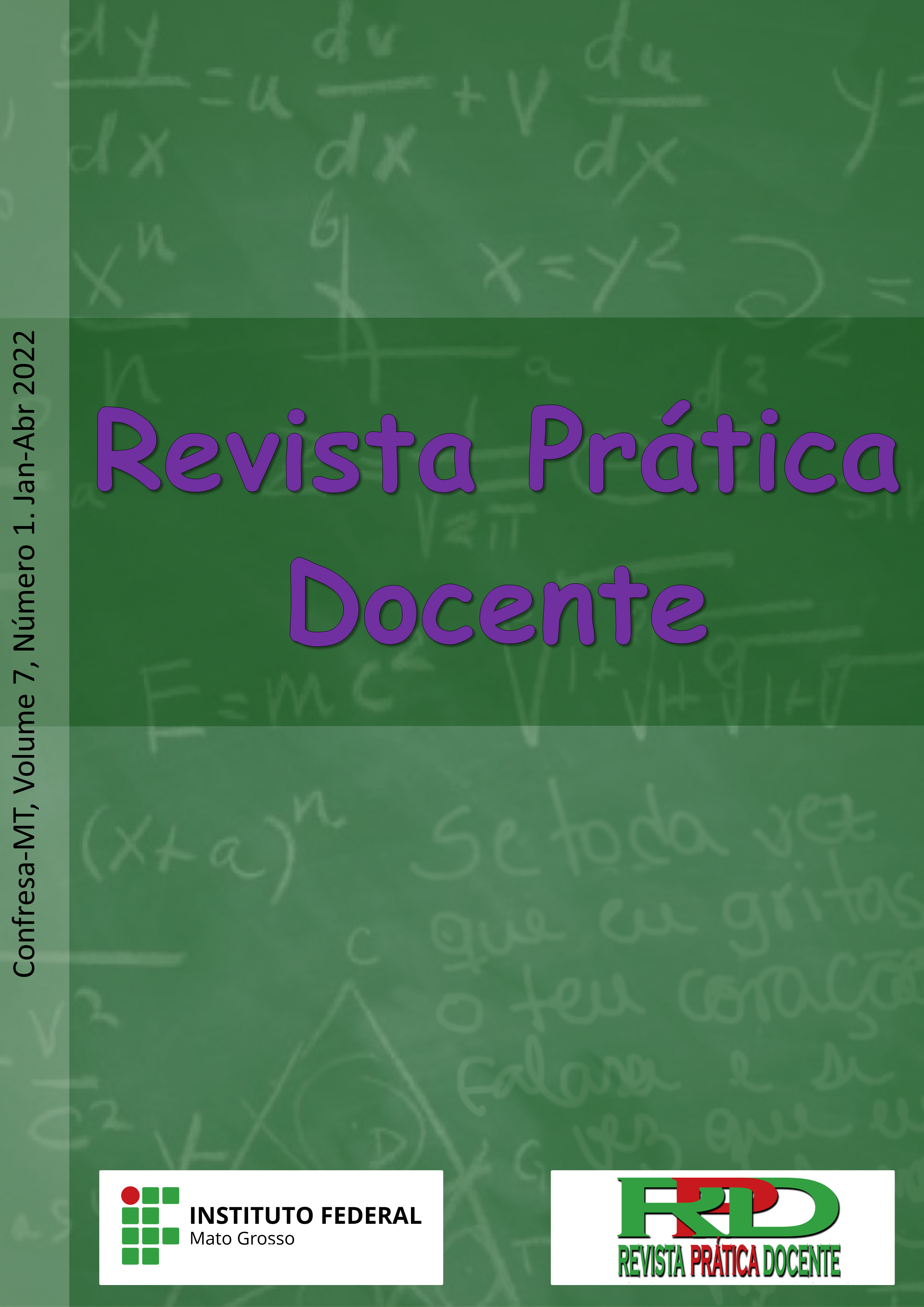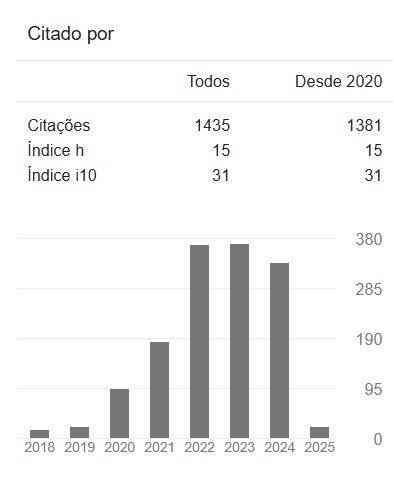THE EMPTYING AND FRAGMENTATION OF CONTENT AS PROTAGONISTS OF THE DISSEMINATION OF FAKES NEWS: THE CASE OF THE INFRARED THERMOMETER
DOI:
10.23926/RPD.2022.v7.n1.e027.id1380Keywords:
Fake News, Scientific literacy, Infrared thermometerAbstract
Thermometers are instruments used to measure the temperature of a body. The model known as infrared or pyrometer becomes popular in front of the efforts to fight off the pandemic. When it pointed to the person, it is capable to receive the infrared radiation emitted and, thus assess the temperature without needs of touch. However, this device was target of several announce transmitted from the social media. The assess of temperature have stopped to be measured in forehead, like the beginning of pandemicto be measured on the arm or hands of the clients who entered the local trade. This change of behavior noticed in the region, expose a concern: the power of false news or fake news in the social behavior. This article thus discusses the needs of promote the scientific literacy, highlighting the dangerous of the emptying of content and expropriation on the role of the teacher as the knowledge transmitter. With the final results, we show the scientific concepts involved in the assess of temperature by the infrared thermometer with the purpose of promote and disseminate the scientific knowledge in a trend of opposition to the conspiracy theory’s rising.
Downloads
Metrics
References
AUSUBEL, David Paul; NOVAK, Joseph Donald and HANESIAN, Helen. Educational psychology: a cognitive view. 2nd. ed. New York, Holt Rinehartand Winston, United States, 1978.
BRASIL. Base Nacional Comum Curricular. 2017. Disponível em: http://basenacionalcomum.mec.gov.br/. Acesso em: 24 jun. 2017.
DELMAZO, Caroline. VALENTE, Jonas Chagas Lúcio, Fake News nas redes sociais online: Propagação e reações à desinformação em busca de cliques. Média & Jornalismo. Ética jornalística para o século XX e XXI. Novos desafios, velhos problemas. N 32, vol. 18, n 1, 2018. DOI: https://doi.org/10.14195/2183-5462_32_11
DUARTE, Newton. Vigotski e o “aprender a aprender”: críticas às apropriações neoliberais e pós-modernas da teoria vikostkiana. 2. ed. Campinas: Autores Associados, 2001. 296 p.
DUARTE, Newton. Educação escolar, teoria do cotidiano e a escola de Vigotski. 3.ed. Campinas: Autores Associados, 2001.
EISBERG, Robert Martin. Fundamentos da Física Moderna, Editora Guanabra Dois, Rio de Janeiro – RJ, 1979.
FRANCIOLI, Fátima Aparecida de Souza. Profissão docente: uma análise dos fatores intervenientes na prática educativa. Ponta Grossa, 2005. Dissertação (Mestrado) – Faculdade de Educação, Universidade Estadual de Ponta Grossa.
GASPAR, Alberto. In: XV Encontro de Físicos do norte e Nordeste. Cinquenta anos de ensino de física: muitos equívocos, alguns acertos e a necessidade do resgate do papel do professor. Disponível em: https://edisciplinas.usp.br/pluginfile.php/3360182/mod_resource/content/0/CINQ%C3%9CENTA%20ANOS%20DE%20ENSINO%20DE%20F%C3%8DSICA.pdf. Acesso em: 08. Dez. 2016.
HALLIDAY, David; RESNICK, Robert; WALKER, Jearl..Fundamentos da Física 3: eletromagnetismo. 8. ed. Rio de Janeiro: LTC – Livros Técnicos e Científicos, Estados Unidos, 2009.
HIGA, Ivanilda.; BOAVENTURA DE OLIVEIRA, Odisseia. A Experimentação nas Pesquisas sobre o Ensino de Física: fundamentos epistemológicos e pedagógicos. Educar em Revista,Curitiba, v. 28, n. 44, p. 75-92, 2012. Disponível em: http://revistas.ufpr.br/educar/article/view/27873/18479. Acesso em: 05. maio. 2017.
Manual de Termômetro Infravermelho. Vonder, 2021. Disponível em: http://www.vonder.com.br/estatico/vonder/documentos/3870650000/Manual%20de%20Instruções.pdf. Acesso em 11. junho. 2021
MACEDO, Elizabeth. Base Nacional Curricular Comum: Novas formas de sociabilidade produzindo sentidos para a educação. Revista e-curriculum, São Paulo, v. 12, 03, p. 1530-1555, 2014. Disponível em: https://revistas.pucsp.br/index.php/curriculum/article/view/21666. Acesso em: 29 nov. 2021.
MASINI, Elcie Fortes Salzano. In: VI Encontro Internacional de Aprendizagem Significativa (VI EIAS) e 3o Encontro Nacional de Aprendizagem Significativa Aprendizagem significativa: Condições para a ocorrência e lacunas que levam a comprometimentos. 1. ed. São Paulo: Vetor, 2008. Disponível em: http://www.if.ufrgs.br/asr/artigos/Artigo_ID2/v1_n1_a2011.pdf. Acesso em: 29 nov. 2021.
MOREIRA, Marco Antônio. Aprendizagem significativa. Brasília: Ed. Universidade de Brasília, 1999.
MOREIRA, Marco Antônio, MASINI, Elcie Fortes Salzano. Aprendizagem significativa: A teoria de David Ausubel. São Paulo: Centauro, 2001.
MOREIRA, Marco Antônio; MASINI, ElcieFotes; Salzano. Aprendizagem significativa: a teoria de David Ausubel. São Paulo: Moraes, 1982.
NAGASHIMA, Lucila Akiko, ZANATTA, Shalimar Calegari, ROYER, Márcia Regina, PIRES, Marilene Mieko Yamamoto, In: Márcia Marlene Stentzler. Subprojeto de ciências biológicas – Campus de Paranavaí: uma abordagem qualiquantitativa. Experiências multidisciplinares na iniciação à docência na Unespar. Kaygangue, p. 41-52. 2017.
NASCIMENTO; Fabrício; FERNANDES, Hílio Laganá; MENDONÇA, Viviane Melo. O ensino de ciências no Brasil: história, formação de professores e desafios atuais. Revista HISTEDBR On-line, Campinas, n. 39, p. 225-249, 2010. Disponível em: https://periodicos.sbu.unicamp.br/ojs/index.php/histedbr/article/view/8639728. Acesso em: 29 nov. 2021.
NIELSEN, J. (2013). Website Reading: It (Sometimes) Does Happen. Nielsen Norman Group.Disponível em: https://www.nngroup.com/articles/website-reading. Acesso em 6 mar. 2022.
OXFORD, D. Word of the Year 2016 is.... Oxford Dictionaries. Disponível em: https://languages.oup.com/word-of-the-year/2016. Acesso em: 6 mar. 2022.
PIRES, Denise Prazeres Lopes, AFONSO, Júlio Carlos, CHAVES, Francisco Artur Braun, A termometria nos séculos XIX e XX. Revista Brasileira de Ensino de Física, v. 28, n. 1, p. 101 - 114, (2006). Disponível em: http://www.leb.esalq.usp.br/leb/aulas/lce5702/termometria.pdf. Acesso em 29 nov. 2021.
ROSA, Cleci Werner; ROSA, Álvaro Becker. O ensino de ciências (Física) no Brasil: da história às novas orientações educacionais. Revista Ibero-americana de Educação, n. 58/2, fev. 2012. DOI: https://doi.org/10.35362/rie5821446
SAVIANI, Demerval. Histórias das ideias pedagógicas no Brasil. 3. ed. Campinas: Autores Associados, 2010. p. 474.
TIPLER, Paul Allen and MOSCA, Gene. Física para cientistas e engenheiros. Volume 2, Editora LTC, 6 edição, 2009.
Tribunal de Justiça do Distrito Federal e dos Territórios. Portaria nº 78. 06 de julho de 2020. Poder Judiciário da União. Brasília. 2020.
ZANATTA, ShalimarCalegari; WEBERLING, Beatriz; PEREIRA, Hercília Alves.Os Conteúdos de Astronomia dos Livros Didáticos. Revista Valore, v. 6, p. 1697-1706, 2021.
Downloads
Published
How to Cite
Issue
Section
License
Copyright (c) 2023 A Revista Prática Docente tem o direito de primeira publicação

This work is licensed under a Creative Commons Attribution-NonCommercial 4.0 International License.
Authors who publish in this journal agree to the following terms:
- Authors retain the copyright and grant the journal the right of first publication, with the paper simultaneously licensed under the Licença Creative Commons Attribution allows the sharing of the work with acknowledgment of authorship and initial publication in this journal.
- Authors are authorized to take additional contracts separately, for non-exclusive distribution of the version of the work published in this journal (e.g. publish in institutional repository or as a book chapter), with acknowledgment of authorship and initial publication in this journal.











